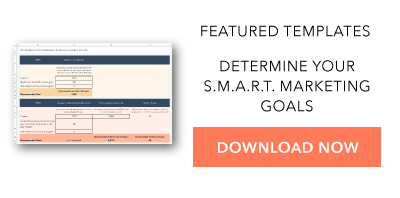Ask any professional athlete or business executive how they became successful, and they’ll tell you they mastered a process. By figuring out which of their habits led to success -- and which didn’t -- they could improve their efficiency, effectiveness, and productivity at work.

The same logic applies to teams and project management. If your team follows a process while working on a project, you’re more likely to develop products or services that effectively solve your customers’ problems.
One of the most widely-used software development processes in project management is called the waterfall methodology, and it's rooted in logic and sequence. If you want to leverage this proven process for your project management efforts, read on.
The Waterfall Model
The waterfall model is a process for software development. It’s a linear-sequential life cycle model, which means you need to complete each stage of the model before you can start the next stage. Since it follows a logical sequence of steps throughout the software development life cycle, similar to how a waterfall flows down a cascading set of rocks, it’s called the waterfall model.
The waterfall model and software development life cycle have six stages: requirements, analysis, design, coding, testing, and deployment.

Picture Credit: Software Testing Material
During the requirements stage, developers write down all the possible requirements of a system in a requirements document. The document defines what the system should do, but not necessarily how it will work. Developers will base all the software’s future development on the requirements document.
In the next stage, analysis, developers use the requirements document to examine and flesh out the logical or theoretical design of the system without accounting for its hardware or software technologies.
The project will then move onto the design stage, where developers alter the logical design of the system to make sure it works with the system’s hardware and software technologies.
Once developers finalize the system’s physical design, the project enters the coding stage. In this stage, developers will reference the system’s requirements and logical and physical specifications to write its actual code.
After coding the system, quality analysts, beta testers, and other testers will use the system and report any bugs they find. Developers will patch the most pressing issues. This is known as the testing stage.
Finally, the project enters the deployment stage, where developers release the system to their market, support their customers, maintain the system, and upgrade it to meet their customers’ evolving needs.
Advantages of The Waterfall Method
If you're considering using the waterfall method for your next project, here are the five main advantages your team will most likely experience:
- Developers can catch design errors during the analysis and design stages, which helps them avoid writing faulty code during the coding stage.
- The project has clearly defined milestones, so developers can work toward concrete goals and easily measure their progress.
- Developers who join the project can easily get up to speed -- all the system’s requirements are in the requirements document.
- The waterfall method structures and organizes the project. From design to release, developers know exactly what to work on.
- Developers can accurately estimate the project’s cost -- all the system’s requirements are defined during the first stage of the model.
Disadvantages of The Waterfall Method
Like every other project management process, the Waterfall Method has its disadvantages. Here are the three main ones to consider before using the method for your next project.
- It’s challenging for customers to define the exact functionality of a system they prefer during the early stages of development -- they must wait until developers finish building the system to see if it actually fits their needs. If the final product isn’t up to par, developers must redesign the system, which is extremely challenging and expensive.
- Since developers finalize the system’s requirements during the first stage of the waterfall method, they can’t change or refine the requirements during the next stages of the development cycle. This non-stop tunnel vision can sap creativity and innovation during development.
- Developers can’t move onto the next stage of development unless they complete the previous one, so the waterfall method can take longer than other project management processes like the agile method, which allows developers to iterate an entire system in short bursts of time, called sprints.



![How to Write a Creative Brief in 11 Simple Steps [Examples + Template]](https://blog.hubspot.com/hubfs/creative-brief_2.webp)





![The Business Requirement Document: What It Is and How to Write It [+5 Templates]](https://blog.hubspot.com/hubfs/what-is-a-business-requirement-doc.jpg)

![The Evolution of Project Management [Infographic]](https://blog.hubspot.com/hubfs/00-Blog_Thinkstock_Images/project-management-evolution.png)